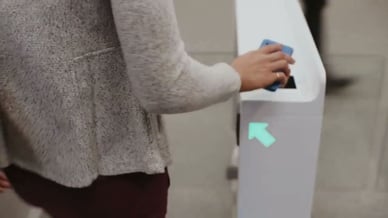There’s an old joke that queueing is the British national pastime. But you’d be hard pressed to find anyone – in Britain or anywhere else – who actually wants to waste time standing around and waiting, and the smartphone is ideally suited for eliminating this; even if it results in Brits having to find another hobby.
It’s simple to determine where lines aren’t necessary. Organisations just need to ask if a task actually requires a person to be present, or if it can be done using a phone at their convenience. If it can, it should.
These solutions will allow people to simply show up and have the best experience possible without any extra steps. No standing in line, no dealing with kiosks or ticket counters, no arriving only to find the show is sold out, restaurant is full or train schedule has changed. They show up in person only to have the experience they desire, and not a moment before.
Which brings us to the recently announced Amazon Go grocery store, which
will lack one standard feature of supermarkets: a checkout lane. Instead, customers scan their smartphones on the way in and an app charges their purchases to their Amazon account on their way out. As an aside, the tagline for this service is “Just Walk Out,” which is flatteringly similar to our own JustRide – especially apt as both use similar underlying mobile barcode technology and follow similar philosophies.
Instead, customers scan their smartphones on the way in and an app charges their purchases to their Amazon account on their way out. As an aside, the tagline for this service is “Just Walk Out,” which is flatteringly similar to our own JustRide – especially apt as both use similar underlying mobile barcode technology and follow similar philosophies.
(Amazon Go store Photograph: Amazon)
This is connected consumer Nirvana. As Michael Solomon noted for Forbes.com, the Amazon Go model takes aim at two priorities of consumers: ease and speed.
Amazon Go is built upon the same philosophy that makes smart transit such a good idea for cities: Making it easier for people to do what they need to do by eliminating steps that require unproductive use of their time; like standing around and waiting. Whether you’re grabbing dinner or catching a train, being able to skip the line means taking back that lost time and using it for something you actually want to do.
Getting rid of lines is an important reason for virtualizing a service and launching an app, because it is based on the needs and expectations of the end user: The grocery shopper, the traveler, the businessperson, the citizen. And in the smart city, those expectations will always be based on the ability to do what they need to, when they need to do it, without any extra steps.
When we as innovators focus on eliminating those steps – especially the steps that advance people towards the front of an unnecessary line – we’re ensuring the success of the solutions we produce.
For more principles to help guide successful Smart City solutions please download our new ebook: Smart City Principles to Prepare for 2050: A Guide to Assessing Smart City Solutions

